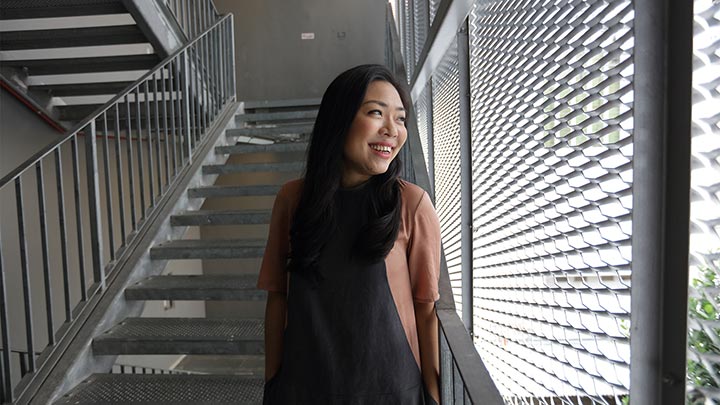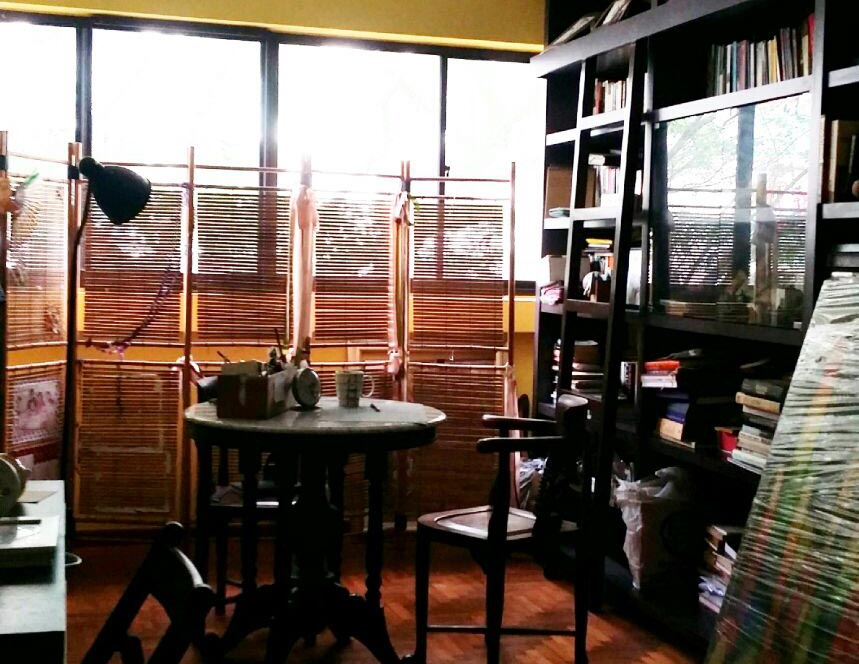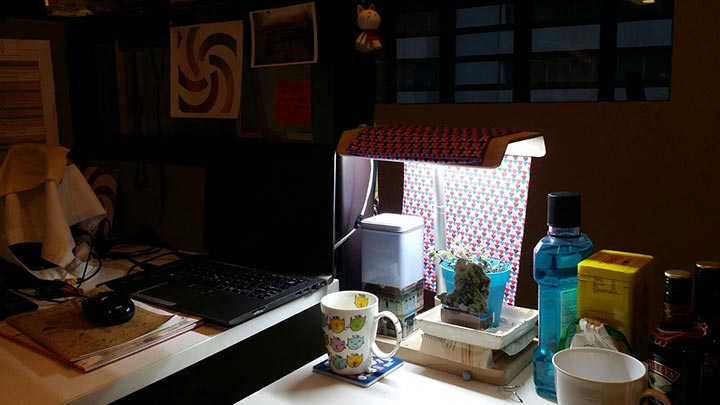Redesigning A Top Design Award

When asked about what she does at work, Ms Genine Loo jokes that every day is “a losing battle” against emails and the clutter on her desk.
That may sound like any officer’s daily struggle. But Genine, Senior Manager at the DesignSingapore Council (Dsg), has had a career quite unlike most public officers’.
She has worked in Shanghai at a multimedia art collective, first as a volunteer, then as a curator. Three years after, she returned to Singapore to do an internship at a local interior design firm. Her interest in design piqued, she then pursued a postgraduate research degree in Environmental Design at Goldsmiths, University of London.
So although Genine, 35, is not a designer, her varied experiences have helped her excel at a major project: reviewing the President’s Design Award (PDA), Singapore’s most prestigious prize for designers and design projects.
Launched in 2006, the PDA is jointly handed out by the Urban Redevelopment Authority (URA) and Dsg. There have been 39 Designers of the Year and 99 Design of the Year winners to date.
But after a decade, and with a mandate from former Dsg Executive Director Agnes Kwek, it was time to reflect: was the award evolving with the changing design landscape? New design fields have emerged, and designers today increasingly work across disciplines and with non-designers to solve problems.
So from December 2016, the Dsg and URA did a comprehensive relook of the PDA’s structure, processes and programmes. That led to an overhaul that was completed in just seven months.
Changes to the President’s Design Award
Greater emphasis on impact
Besides technical excellence, the design’s impact will be assessed, for example, on how it enables economic transformation, raises the quality of life, and advances the Singapore brand.
Expanded local and international outreach
Besides having the PDA as a platform to spread design awareness and education at home, the Dsg wants to put award recipients “on the world stage to shout about Singapore design”, says Genine. There are now more opportunities for PDA recipients to do joint showcases, exhibitions and similar events in collaboration with international awards, such as the UK’s D&AD Awards and the Danish Design Awards.
New awards cycle
The PDA has moved to a biennial cycle, instead of being given out annually. This allows the Dsg to run the awards with more rigorous requirements, and offers more time for complex projects to mature and produce clearer impact outcomes.
Getting ideas and input
Tasked to increase the award’s focus on design impact, Genine and her team had their work cut out for them. They talked to stakeholders – designers; and past winners, jurors and award managers – for feedback and ideas. She looked into international awards for best practices and processes. Once the proposal was approved, Genine had to communicate the changes to the design community and persuade designers to submit their projects.
The new judging criteria also meant streamlining the judging process, and assembling a new multidisciplinary panel of jurors. Working closely with design experts and veteran jurors, Genine’s team came up with a rigorous new methodology for appraising the impact of a submitted design, something she is particularly proud of.
After all, her time at Goldsmiths had shown her what good design could do. She was challenged “to reframe what design is, who practises or participates in it, and how design can address societal issues,” she says.
“It helped me see that design goes beyond products and spaces. Design can also be found in systems, processes, organisations and services.”
As part of her coursework, she volunteered at a farm to learn how food was grown for large-scale consumption, and joined a community design group to experiment with creative food waste disposal ideas. These experiences informed her final term project on food shopping habits in supermarkets.
Likewise, for the PDA review, Genine found and explored ideas at the most unlikely of places – while snowed in at a wood cabin in France during a holiday in 2017. “It gave me time to research and think,” she says. “That’s quite important for a task like this, when normally we don’t have the luxury of time to really sit, read, make notes and think.”

As a bibliophile, Genine reads one to three books weekly, and can confidently say that she has 758 books shelved at home (that is, after donating 40 to the National Library).
For the PDA review, Genine read up on how social enterprises measure impact. This came in useful for devising the impact assessment for submitted designs, which Genine did with Dsg’s knowledge partner, the International Design Centre at the Singapore University of Technology and Design. Psychology and behavioural science books also gave her ideas on how to talk to stakeholders, communicate the new objectives for the award and make them stick.

Talk to users
Research alone is pointless without talking to end-users, Genine has learned.
She illustrates this with an anecdote from her stint with a landscape architect in London. Commissioned to redesign a well-loved religious space, the architect and Genine carried out plenty of online research, made several design iterations, and even consulted a member of the faith.
But when the time came for the team to proudly present their proposal, the audience “hated it”, says Genine. Their reactions, from bafflement to outrage, were so negative that disclaimers (“For proposal only!”) had to be quickly printed and pasted over the designs.
The proposed design, it turned out, would have removed all of the community’s favourite, regularly used features. This revelation occurred only later during a site tour offered by a kind volunteer.
For Genine, it was a lesson that stuck: “Talk to the users, the ones who would be most affected. Otherwise all your ideas will just exist in a vacuum, no matter how well-meaning or well-researched.”

And while she works on enhancing the design landscape for the pros, she keeps her mind and hands creative with her own artistic projects too. Her “cluttered” desk features a plant-growing lamp she made herself. At home, more craft projects await, as collections of discarded clothes and various odd and ends are being transformed into woven rugs or DIY jewellery.
With this mix of curiosity and research, Genine can be “super open” to alternative views, yet know how to “weigh suggestions against what [she’s] set out to do”.
The 2018 PDA recipients received their awards in July.
- POSTED ON
Jul 10, 2018
- TEXT BY
Zul Othman
Tuber
- PHOTOS BY
Kevin Yang
Genine Loo
- ART DIRECTION BY
Yip Siew Fei









